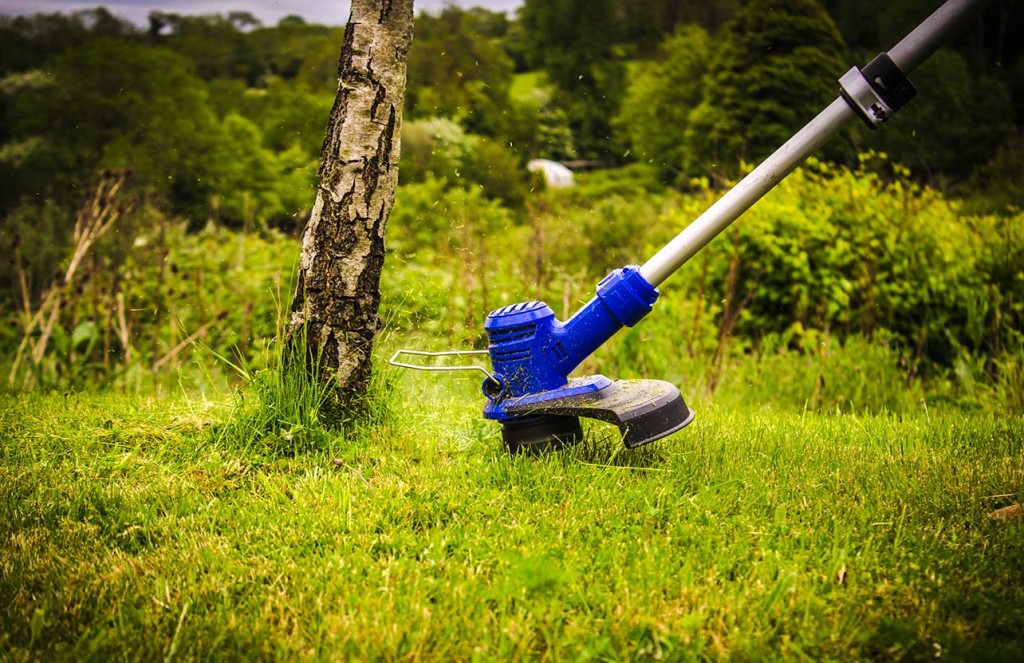An Easy Maintenance Guide For Grass Trimmers / Strimmers

Grass trimmers / strimmers are one of the easiest types of machines you will have to service out of your garden machinery collection; however, many people neglect the basics and compromise the quality of their cutting.
With regular servicing, you will be able to guarantee your grass trimmer continues to perform to its fullest potential, and you don’t need to spend more than a few minutes on the maintenance either.

To make it as simple as possible for you, we’ve put together this quick maintenance guide.
This should only be used as a rough guide as each grass trimmer is different, and you should always consult your user manual for full maintenance guidelines.
In general, however, the following steps should apply to almost all petrol grass trimmers / strimmers.
CHECK THE AIR INTAKE
When: After every session.
A grass trimmer will create a lot of debris in the air when it’s cutting through your garden, so grass cuttings, dirt and general grime will be sucked into the intake vents.
Take a minute to check your air intake and remove anything that will be blocking the vents.
INSPECT THE NYLON CORD
When: After every session.
If the nylon cord is damaged, it will no longer be able to cut through grass or shrubbery, which means you will have to extend it out and possibly cut off the excess cord depending on the features your grass trimmer has.
If the cord spool within the cutting head is too low, you will have to open it up and replace it with a new one.
DO A GENERAL INSPECTION OF YOUR GRASS TRIMMER
When: After every session.
When cutting near to objects such as walls, fences and trees, it’s possible that your grass trimmer could sustain some damage.
Whether this is from a knock or bump, or simply a part coming loose from the vibration, you don’t want to be using a strimmer which is suddenly unsafe.
Always perform a quick inspection to make sure everything is as it should be.
CHECK THE AIR FILTER
When: After every 10 hours of use - more frequent in dusty locations.

Over time, your air filter will become clogged and require cleaning.
Simply remove it from your grass trimmer and soak it in warm water, then carefully wring out the excess liquid and leave it to dry.
Alternatively, you could simply blow out the dust and dirt; however, this method is not as thorough.
INSPECT THE SPARK PLUG
When: After every 25 hours of use.
The spark plug will suffer from standard wear and tear as you continue to use your grass trimmer, which is why a regular inspection is important.
If you spot any damage, simply replace it.
COMPLETE INSPECTION
When: After every 40 hours of use.
Combine all of the above steps into one regular service to ensure that each aspect of your grass trimmer is still functioning as it should.
PREPARE YOUR GRASS TRIMMER FOR WINTER
When: At the end of gardening season.
Before your grass trimmer is put in the corner of your garden shed or garage for the cold winter months, make sure you prepare it properly.
Clean it by scraping off any grass, dirt and grime that may be stuck to the cutting head. This could cause extensive damage to the grass trimmer if left uncleaned for months at a time.
Next, use a light oil on any metallic surfaces to protect it from rust, then drain any excess petrol left in the fuel tank. You can do this by syphoning it into an appropriate container, or simply by starting it and leaving it run until it’s dry.
Once in your garden shed or garage, place it in a position which will prevent it from falling over (if not lying down), and place a sheet over it to protect it from any moisture.
IT’S AS SIMPLE AS THAT
By following these steps, you will find your grass trimmer continues to cut at its very best.
If it’s too late for your current grass trimmer and it’s time to invest in a new one, you can view our full range of grass trimmers / strimmers here.
If you have any questions, please don’t hesitate to contact us by calling 01437 700123, emailing us at info@thepowersite.co.uk, or using the live chat in the bottom corner.

